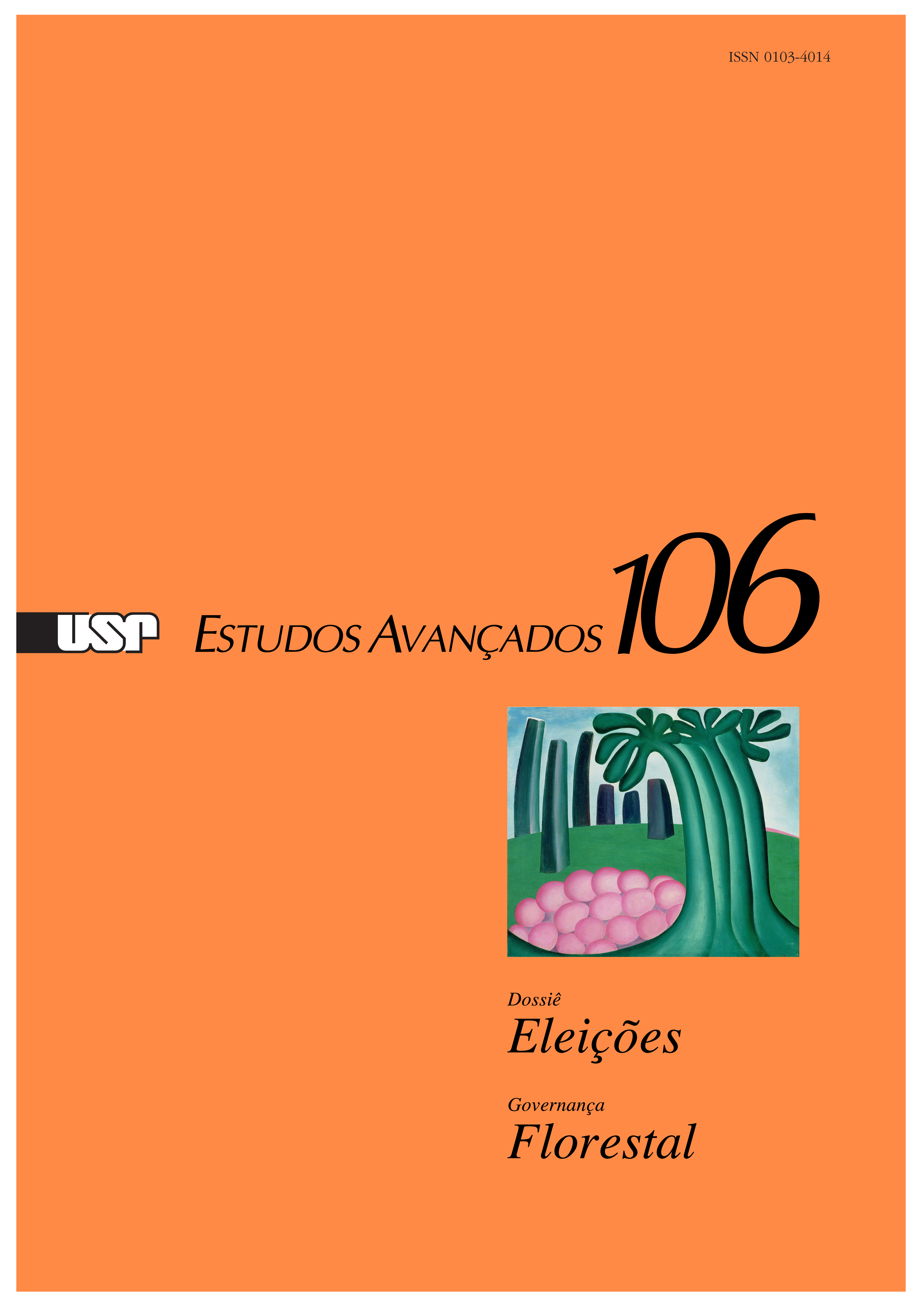Experiências de governança da restauração de ecossistemas e paisagens no Brasil
DOI:
https://doi.org/10.1590/s0103-4014.2022.36106.013Palavras-chave:
Coalizões Multiatores, Inovações de governança, lataformas multissetoriais, RedesResumo
O Brasil tem uma longa história de políticas, pesquisa e prática de restauração de ecossistemas degradados. A Década da Restauração de Ecossistemas das Nações Unidas (2021-2030) foi lançada com o principal objetivo de prevenir, cessar e reverter a degradação de ecossistemas em todo o mundo. Neste artigo, descrevemos algumas experiências no Brasil e ilustramos como elas podem contribuir para o cumprimento desses objetivos. As ações de restauração florestal no Brasil são fortemente motivadas e lideradas por associações da sociedade civil descentralizadas, e coalizões e plataformas multissetoriais. Destacamos o papel crítico das inovações de governança nos níveis regional, estadual e municipal que fortalecem as ações de restauração, apesar da implementação deficiente das iniciativas do governo federal.
Downloads
Referências
ADAMS, C. et al. Governança da restauração florestal da paisagem no Brasil: desafios e oportunidades. Desenvolvimento e Meio Ambiente v.58, p.450-73, jul./dez. 2021.
AGÊNCIA NACIONAL DE ÁGUAS. Nota informativa Programa Produtor de Água. 2018. 17 p. Disponível em: <https://www.ana.gov.br/todososdocumentosdoportal/documentossip/produtordeagua/documentosrelacionados/1notainformativaprogramaprodutordeagua.p>. Acesso em: Set. 2021.
CALMON, M. Restauração de florestas e paisagens em larga escale: O Brasil na liderança global. Ciência e Cultura v.73, p.44-8, 2021.
CHAVES, R. B. et al. On the need of legal frameworks for assessing restoration projects success: new perspectives from São Paulo state (Brazil). Restoration Ecology, v.23, p.754-9, 2015.
CHAZDON, R.; BRANCALION, P. Restoring forests as a means to many ends. Science v.365, n.6448, p.24-5, 2019.
CHAZDON, R. L. et al. Key challenges for governing forest and landscape restoration across different contexts. Land Use Policy, v.104, p.104854, May 2021.
CONSERVADOR DA MANTIQUEIRA 2016. Disponível em: <http://conservadordamantiqueira.org/ Governo do Espírito Santo>. Acesso em: Ago, 2011.
ISERNHAGEN, I. L.; MORAES, F. D.; ENGEL, V. L. The Rise of the Brazilian Network for Ecological Restoration (REBRE): What Brazilian Restorationists Have Learned from Networking. Restoration Ecology v.25, n.2, p.172-7, 2017.
LAPIG (Laboratório de Processamento de Imagens e Geoprocessamento). Digital Atlas of Brazilian Pastures. Goiás: Universidade Federal de Goiás, 2020. Disponível em: <https://pastagem.org/map>. Acesso em: Set, 2021.
LEI DE PROTEÇÃO DA VEGETAÇÃO NATIVA. Disponível em: <http://www.planalto.gov.br/ccivil_03/_ato20112014/2012/lei/l12651.htm>. Acesso em: Set. 2021.
MINISTÉRIO DO MEIO AMBIENTE. Planaveg: Plano Nacional de Recuperação da Vegetação Nativa. Brasília, DF: Ministério do Meio Ambiente, Ministério da Agricultura, Pecuária e Abastecimento, Ministério da Educação, 73 p., 2017.
NAGENDRA, H.; OSTROM, E. Polycentric governance of multifunctional forested landscapes. International Journal of the Commons, v.6, n. 2, p.104-33, 2012.
RICHARDS, R. C. et al. Governing a pioneer program on payment for watershed services: Stakeholder involvement, legal frameworks and early lessons from the Atlantic Forest of Brazil. Ecosystem Services, v.16, p.23-32, 2015.
SANCHES, R. A.; FUTEMMA, C. R. T.; ALVES, H. Q. Indigenous territories and governance of forest restoration in the Xingu River (Brazil). Land Use Policy, v.104, p.104755, 2021.
SCHMIDT, M. V. C. et al. Indigenous knowledge and forest succession management in the Brazilian Amazon: Contributions to reforestation of degraded areas. Front. For. Glob. Change, v.4, p.605925, 2021.
SECRETARIA DE MEIO AMBIENTE, PREFEITURA MUNICIPAL DE EXTREMA. Conservador das Águas: 10 anos. 2019. Disponível em: <https://www.extrema.mg.gov.br/conservadordasaguas/wp-content/uploads/2019/11/Conservador-da-%C3%81guas_Livreto_12_ANOS_WEB.pdf>. Acesso em: Set. 2021.
SIQUEIRA, L. P. et al. Engaging People for Large-Scale Forest Restoration: Governance Lessons from the Atlantic Forest of Brazil. In: MARQUES, M. C. M.; GRELLE, C. E. V. (Ed.) The Atlantic Forest: History, Biodiversity, Threats and Opportunities of the Mega-diverse Forest. Springer Nature, 2021, p.389-402. Disponível em:<https://doi.org/10.1007/978-3-030-55322-7_18>. Acesso em: Set. 2021.
UNITED NATIONS ENVIRONMENT PROGRAMME. The United Nations Decade on Ecosystem Restoration Strategy. 2021. Disponível em: <https://wedocs.unep.org/bitstream/handle/20.500.11822/31813/ERDStrat.pdf?sequence=1&isAllowed=y>. Acesso em: Set. 2021.
URZEDO, D. I. D. et al. Seed networks for upscaling forest landscape restoration: is it possible to expand native plant sources in Brazil? Forests, v.11, n.3, p.259, 2020.
VIANI, R. A. et al. Synergism between payments for water-related ecosystem services, ecological restoration, and landscape connectivity within the Atlantic Forest hotspot. Tropical Conservation Science, v.11, p.1-9, 2018.
VIEIRA, R. R. S. et al. Compliance to Brazil’s Forest Code will not protect biodiversity and ecosystem services. Diversity and Distributions, v.24, n. 4, p.434-8, 2018.
Publicado
Edição
Seção
Licença
Copyright (c) 2022 Robin L. Chazdon, Rafael B. Chaves, Miguel Calmon, Ludmila Pugliese de Siqueira, Rodrigo G. Prates Junqueira

Este trabalho está licenciado sob uma licença Creative Commons Attribution-NonCommercial 4.0 International License.
Estudos Avançados não celebra contrato de cessão de direitos autorais com seus colaboradores, razão pela qual não detém os direitos autorais dos artigos publicados. Os interessados em reproduzir artigos publicados na revista devem necessariamente obter o consentimento do autor e atribuir devidamente os créditos ao periódico.


